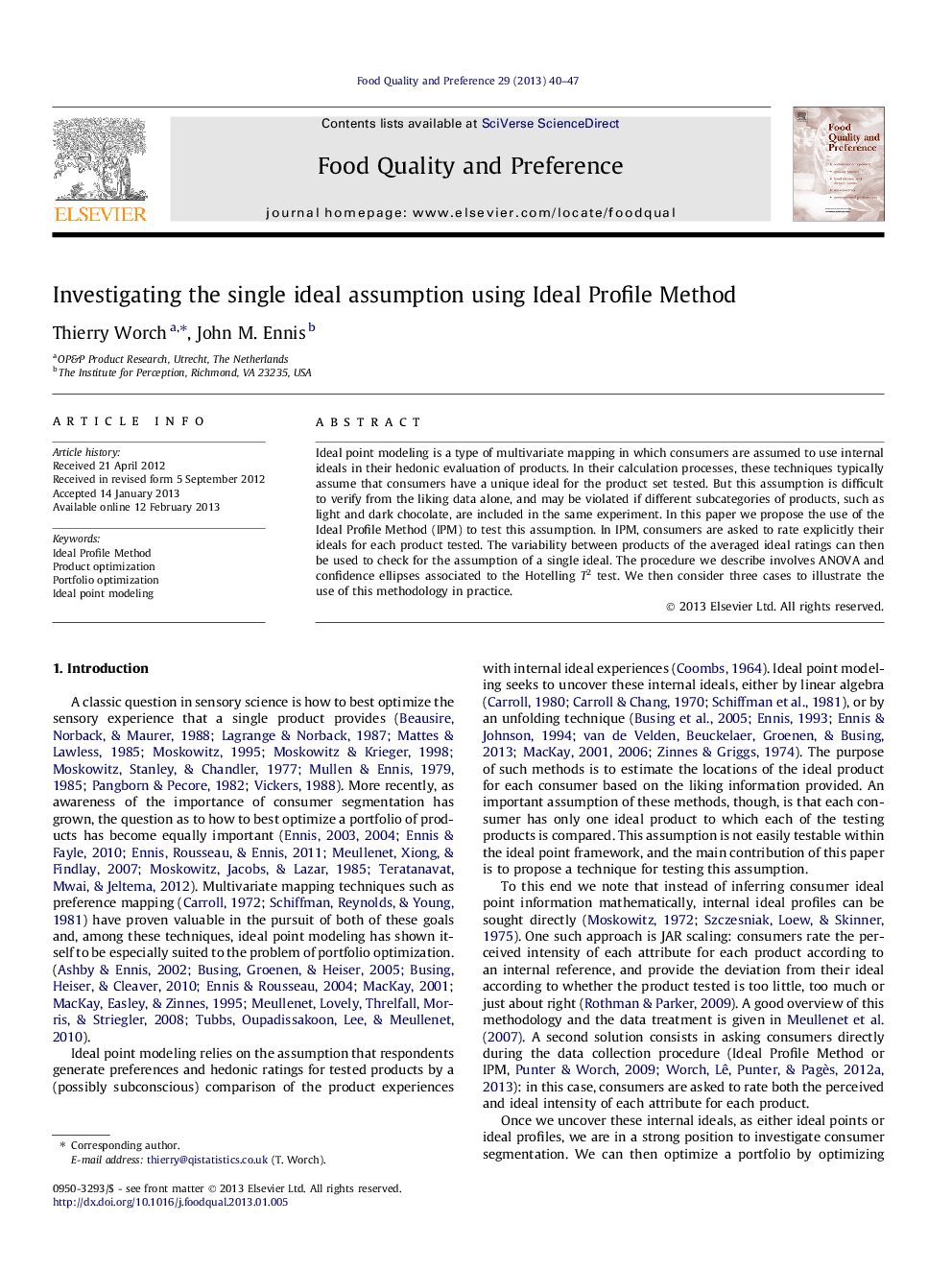| Article ID | Journal | Published Year | Pages | File Type |
|---|---|---|---|---|
| 4317338 | Food Quality and Preference | 2013 | 8 Pages |
Ideal point modeling is a type of multivariate mapping in which consumers are assumed to use internal ideals in their hedonic evaluation of products. In their calculation processes, these techniques typically assume that consumers have a unique ideal for the product set tested. But this assumption is difficult to verify from the liking data alone, and may be violated if different subcategories of products, such as light and dark chocolate, are included in the same experiment. In this paper we propose the use of the Ideal Profile Method (IPM) to test this assumption. In IPM, consumers are asked to rate explicitly their ideals for each product tested. The variability between products of the averaged ideal ratings can then be used to check for the assumption of a single ideal. The procedure we describe involves ANOVA and confidence ellipses associated to the Hotelling T2 test. We then consider three cases to illustrate the use of this methodology in practice.
► The single ideal point assumption made by ideal points modeling techniques is tested using IPM. ► This methodology uses confidence ellipses and MANOVA to define subcategories of products. ► Examples are given and discussed. ► In cases where multiple ideals are found, recommendations on how to use LSA or IPM on partitioned data are given.
